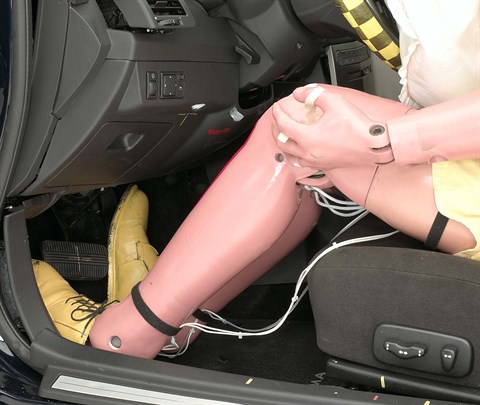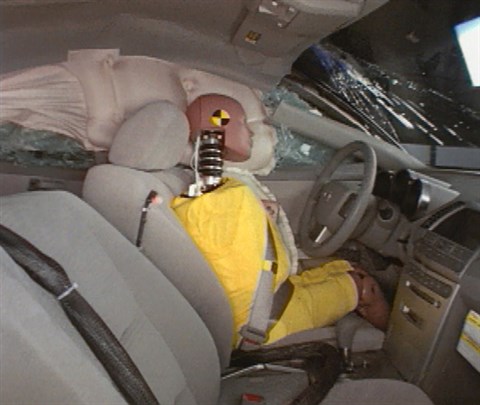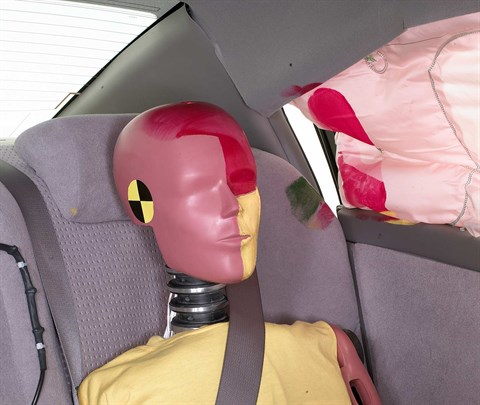Moderate overlap front: original test
Rating applies to 2004-08 models
Tested vehicle: 2004 Nissan Maxima 3.5 SE 4-door
The Nissan Maxima was redesigned for the 2004 model year.
| Evaluation criteria | Rating |
|---|---|
| Overall evaluation | |
| Structure and safety cage | |
| Driver injury measures | |
| Head/neck | |
| Chest | |
| Leg/foot, left | |
| Leg/foot, right | |
| Driver restraints and dummy kinematics | |

Action shot taken during the frontal offset crash test; the side curtain airbag and side chest airbag on the driver side inflated during the crash.

The energy of the crash was absorbed by the front end of the car, preserving the driver's survival space well.

Both side airbags deployed for the driver dummy. The large curtain airbag kept the dummy's head away from the B-pillar and roof rail.

Intrusion into the driver's space was minimal, and forces on the legs and feet were low.
Side: original test
Rating applies to 2004-08 models
Tested vehicle: 2005 Nissan Maxima 3.5 SE 4-door with standard front and rear head curtain airbags and standard front seat-mounted torso airbags
The Nissan Maxima was redesigned for the 2004 model year.
| Evaluation criteria | Rating |
|---|---|
| Overall evaluation | |
| Structure and safety cage | |
| Driver injury measures | |
| Head/neck | |
| Torso | |
| Pelvis/leg | |
| Driver head protection | |
| Rear passenger injury measures | |
| Head/neck | |
| Torso | |
| Pelvis/leg | |
| Rear passenger head protection | |

View of the vehicle and barrier just after the crash test.

View of the vehicle after the crash with doors removed, showing the side airbags and damage to the occupant compartment.

Action shot taken during the side impact crash test showing the driver dummy's head was protected from being hit by hard structures by the side curtain airbag.

Smeared greasepaint shows where the rear passenger dummy's head was protected by the side airbag.
Head restraints & seats
Seat type: Cloth seats AHR
| Overall evaluation | |
|---|---|
| Dynamic rating | |
| Seat/head restraint geometry |
Seat type: Leather seats AHR
| Overall evaluation | |
|---|---|
| Dynamic rating | |
| Seat/head restraint geometry |
About the head restraint & seat test
Currently, IIHS tests apply only to front seats.
